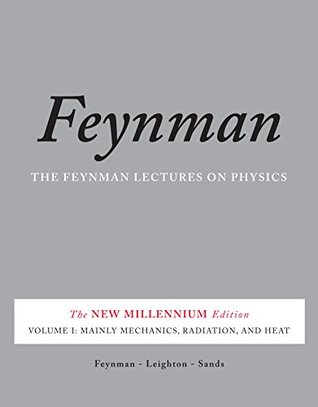More on this book
Kindle Notes & Highlights
Read between
November 15, 2015 - February 4, 2021
The Laws of Thermodynamics
Heat engines; the first law
The determination of the relationships among the various properties of materials, without knowing their internal structure, is the subject of thermodynamics.
The second law
Specifically, Carnot assumed that heat cannot be taken in at a certain temperature and converted into work with no other change in the system or the surroundings.
Now, the hypothesis of Carnot, the second law of thermodynamics, is sometimes stated as follows: heat cannot, of itself, flow from a cold to a hot object. But, as we have just seen, these two statements are equivalent: first, that one cannot devise a process whose only result is to convert heat to work at a single temperature, and second, that one cannot make heat flow by itself from a cold to a hot place.
Reversible engines
The efficiency of an ideal engine
The thermodynamic temperature
Entropy
For a long time it was believed that absolute entropy meant nothing—that only differences could be defined—but finally Nernst proposed what he called the heat theorem, which is also called the third law of thermodynamics. It is very simple. We will say what it is, but we will not explain why it is true. Nernst’s postulate states simply that the entropy of any object at absolute zero is zero. We know of one case of and , namely , where is zero; and so we can get the entropy at any other point.
First law: the energy of the universe is always constant. Second law: the entropy of the universe is always increasing.
Summary of the laws of thermodynamics
First law: Heat put into a systemWork done on a system=Increase in internal energy of the system: Second law: A process whose only net result is to take heat from a reservoir and convert it to work is impossible. No heat engine taking heat from and delivering heat at can do more work than a reversible engine, for which The entropy of a system is defined this way: (a) If heat is added reversibly to a system at temperature , the increase in entropy of the system is . (b) At , ( third law ). In a reversible change , the total entropy of all parts of the system (including reservoirs) does not
...more
45
Illustrations of Thermodynamics
Internal energy
the thermodynamic jungle of partial derivatives.
Applications
The Clausius-Clapeyron equation
When knowledge is weak and the situation is complicated, thermodynamic relations are really the most powerful. When the situation is very simple and a theoretical analysis can be made, then it is better to try to get more information from theoretical analysis.
46
Ratchet and pawl
How a ratchet works
The ratchet as an engine
Reversibility in mechanics
Irreversibility
Order and entropy
So with the above technical definition of disorder we can understand the proposition. First, the entropy measures the disorder. Second, the universe always goes from “order” to “disorder,” so entropy always increases. Order is not order in the sense that we like the arrangement, but in the sense that the number of different ways we can hook it up, and still have it look the same from the outside, is relatively restricted.
For some reason, the universe at one time had a very low entropy for its energy content, and since then the entropy has increased. So that is the way toward the future. That is the origin of all irreversibility, that is what makes the processes of growth and decay, that makes us remember the past and not the future, remember the things which are closer to that moment in the history of the universe when the order was higher than now, and why we are not able to remember things where the disorder is higher than now, which we call the future.
It cannot be completely understood until the mystery of the beginnings of the history of the universe are reduced still further from speculation to scientific understanding.
47
Sound. The wave equation
Waves
The propagation of sound
The wave equation
The gas moves and changes the density.
The change in density corresponds to a change in pressure.
Pressure inequalities generate...
This highlight has been truncated due to consecutive passage length restrictions.
Solutions of the wave equation
The speed of sound
48
Beats 48–1 Adding two waves
48–2 Beat notes and modulation
48–3 Side bands
48–4 Localized wave trains
48–5 Probability amplitudes for particles
48–6 Waves in three dimensions
48–7 Normal modes
So we see that we could analyze this complicated motion either by the idea that there is a resonance and that one passes energy to the other, or else by the superposition of two constant-amplitude motions at two different frequencies.


